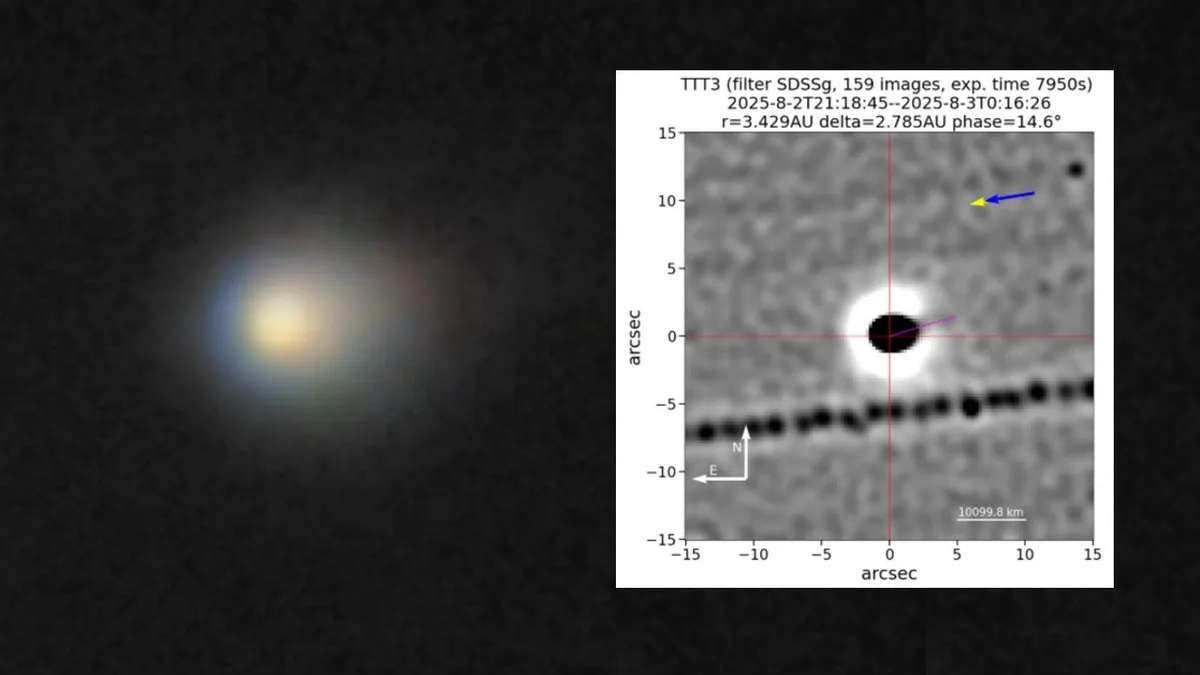
An interstellar comet is currently making waves in the astronomical community as it dramatically jets off ice and dust into space. This fascinating celestial object, known as 3I/ATLAS, is sending a remarkable jet of material towards the sun as our nearest star warms up some of its surface. Recent images reveal the comet's icy, rocky nucleus as a large black dot, surrounded by a glowing white halo—this is the comet's coma, or atmosphere.
The jet from 3I/ATLAS is distinctly marked in purple, blasting off in the direction of the sun, which is a typical behavior observed in comets within our solar system. Notably, 3I/ATLAS is only the third known interstellar object to pass through our solar system. It is rapidly approaching the sun, with its closest approach scheduled for October 30, coming within 1.8 astronomical units from Earth. This proximity will allow enthusiasts to view the comet through small telescopes before it makes its exit back into the depths of space.
Astronomers first reported the presence of the comet's jet on October 15 through the Astronomer's Telegram, an announcement service tailored for the astronomy community. Robert Rutledge, an associate professor at Montreal's McGill University, serves as the editor-in-chief of this platform. The footage showcasing the jet was captured on August 2 and features a composite of 159 exposures, each lasting 50 seconds. This impressive imaging was conducted using the Two-meter Twin Telescope at Teide Observatory, located in Tenerife, Canary Islands.
Miquel Serra-Ricart, an astrophysicist and chief science officer at the Light Bridges private research institution, which co-manages Teide Observatory, provided insights into the observations. He shared this exciting news with our sister site, LiveScience, via email. Serra-Ricart noted that the images are not yet peer-reviewed but highlighted that the comet's tail is also oriented away from the sun, aligning with typical behavior for these icy celestial bodies.
As comets approach the sun, they experience varying temperatures across their surfaces. While regions facing the sun heat up the fastest, weaker areas can see sublimated gases burst through, resulting in sun-facing jets. Serra-Ricart estimated that the jet from 3I/ATLAS could extend as far as 6,200 miles (10,000 km) from the comet's surface, a distance greater than twice the width of the largest part of the United States.
The jet is believed to be composed of carbon dioxide and dust particles, similar to what was previously observed by NASA's James Webb Space Telescope back in August. As 3I/ATLAS continues its journey through our solar system, it promises to reveal more secrets about the nature of interstellar comets and their behavior as they interact with solar radiation.